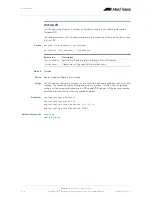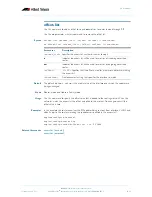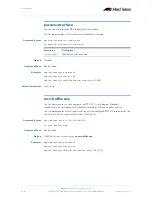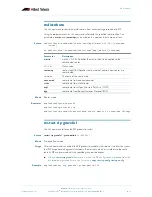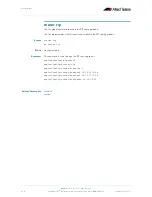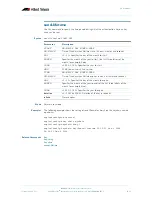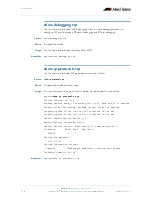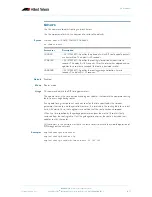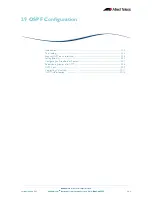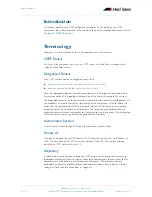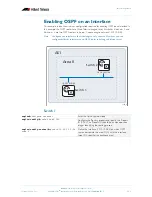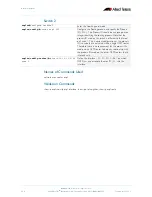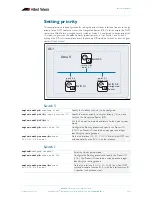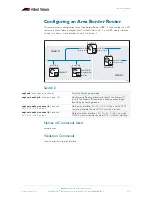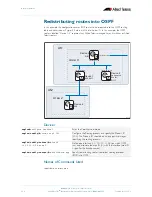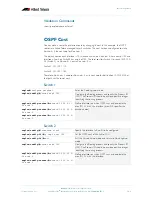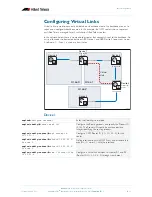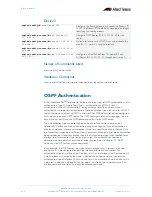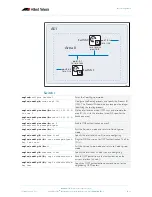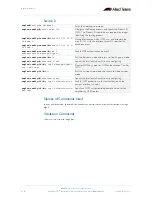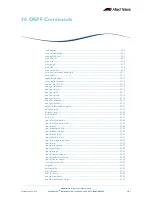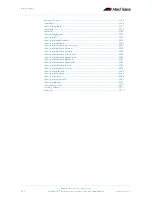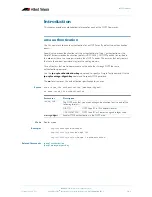
OSPF Configuration
©2008 Allied Telesis Inc. All rights reserved.
29.2
AlliedWare Plus
TM
Operating System Software Reference C613-50003-00 REV E
Software Version 5.2.1
Introduction
This chapter contains basic OSPF configuration examples. To see details on the OSPF
commands used in these examples, or to see the outputs of the validation commands, refer to
Chapter 30, OSPF Commands
.
Terminology
Following is a brief description of terms and concepts used in this chapter:
OSPF Router
Any Layer 3 routing device that is running OSPF, such as an Allied Telesis managed Layer 3
switch or Allied Telesis router.
Designated Router
Each OSPF network contains a designated router, that:
■
originates the network link state advertisement for the network
■
becomes adjacent to all other routers on the network
Since the topological database is spread over adjacencies, the designated router coordinates
the synchronization of the topological database on all the routers attached to the network.
The designated router for a broadcast network is determined dynamically via hello packets. On
non-broadcast multi-access networks, static configuration information is used to initiate the
search for a designated router. To help in dynamic fallover, OSPF also determines a backup
designated router for a network via hello packets. The backup designated router, like the
designated router maintains an adjacency to all other routers on the network. If the designated
router fails for any reason, the backup designated router takes over.
Autonomous System
A set of routers that exchange OSPF routing information with each other.
Router ID
A unique ID assigned to each OSPF router. This ID takes the same form as an IP address, i.e.
A.B.C.D, where each of A,B,C,D is a number between 0 and 254. This number uniquely
identifies the OSPF router within the AS.
Adjacency
A relationship created between neighboring OSPF routers, for the purpose of exchanging
topological information. Not every router needs to become adjacent to every other router.
Adjacencies are established and maintained with
hello
packets. These packets are sent
periodically on all router interfaces. Bidirectional communication is determined by a router
seeing itself listed in hello packets from its neighbors.

